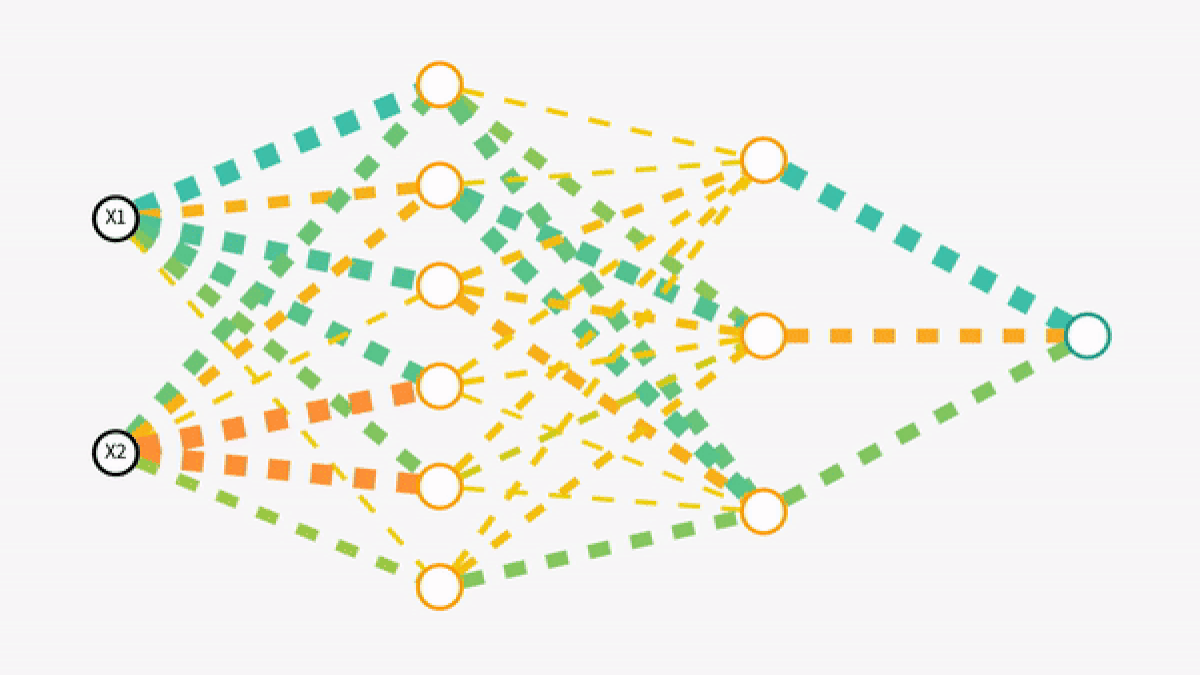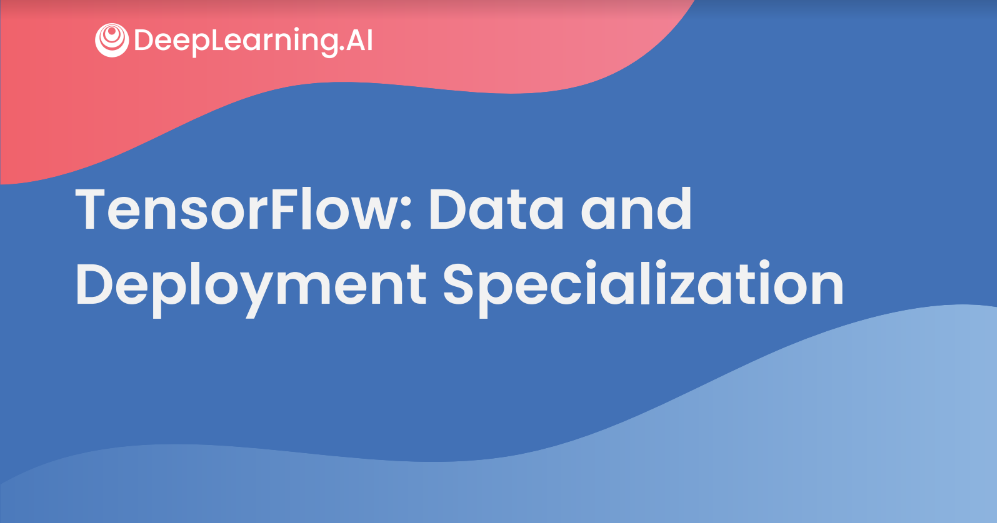Dear friends,
We're busily wrapping up the Machine Learning Yearning book. Meanwhile, we'd like to give you regular updates on important developments in AI, with an emphasis on helping you build a career or business in it. Please let me know how we might make them more useful to you.
Climate change is one of humanity's most pressing problems, and the technical community must help solve it. I recently hosted an AI For Climate Change symposium at Stanford. There, we saw projects ranging from wildfire risk prediction to smart grid optimization. I'll share more info on this effort in the future.
Keep learning,
Andrew
DeepLearning.AI Exclusive

Initializing Neural Networks
Initialization can have a significant impact on convergence in training deep neural networks. Simple initialization schemes can accelerate training, but they require care to avoid common pitfalls. In this interactive tutorial, we’ll explain how to initialize neural network parameters effectively. Learn more
News
The Robots are Winning
Two prominent economists cast doubt on rosy predictions that automation will create more jobs than it destroys—unless we design AI to promote human labor.
What’s happening: Machines in recent decades have put people out of work faster than new jobs have been created, according to research by economists Daron Acemoglu (MIT) and Pascual Restrepo (Boston U). Their recent work shows:
- AI is set to continue edging out humans.
- Big tech companies rule the economy by using AI to remove humans from operations.
- They're driving AI research in the same direction
- This work comes on the heels of a Brookings Institution report concluding that automation and AI threaten a quarter of U.S. jobs.
Silver lining: It’s not inevitable that AI will continue to shrink the job market. AI can be designed to create new, high-productivity tasks for people:
- In education, AI can spot differences between students’ learning styles, generating demand for one-on-one instruction.
- In healthcare, it can analyze information that would empower providers to deliver a wider range of labor-intensive services.
- Mixed-reality tech can enable humans to perform with higher precision, potentially reclaiming roles lost to machines.
To be sure: Many academics and think tanks believe that automation will create more jobs than it destroys. Employment typically grows despite waves of industrialization and computerization.
Yes, but: Walmart is beefing up its robot workforce to track stock, clean floors, and unload trucks. Some 900 stores are being outfitted to let customers pick up orders on their own. Executives said they’ll hire more workers to run ecommerce operations to compete with Amazon.
Automatic Annotation
A new tool promises to speed up the laborious process of annotating computer-vision training data.
What’s new: Curve-GCN estimates object outlines and lets you tweak them for a tighter fit. The tool is much faster than other approaches, according to researchers at the University of Toronto, Vector Institute, and Nvidia.
How it works: You start by drawing a bounding box around an object. Then Curve-GCN outlines the object’s perimeter automatically.
- You can drag the outline into a more precise location, and the tool will recalculate the line. The process takes only a few seconds. See this video.
- The tool was trained on the data set of urban scenes known as Cityscapes.
- Nonetheless, it does well with general scenes, aerial imagery, and medical imagery.
Why it matters: Annotating data can be sheer drudgery, and labelers need all the help they can get. Curve-GCN offers high precision with an appealing combination of automation and human-in-the-loop control.
Bottom Line: The new tool could save so much time that data wranglers are able to amass larger sets of labelled images. That could make for faster, more effective training.
Drones Go Commercial
Alphabet spin-out Wing launched its consumer drone delivery service, opening doors for specialists in computer vision and navigation.
What’s new: Wing carries goods from 12 local businesses to “a limited set of eligible homes” in Canberra, Australia. The company touts the service’s speed, small carbon footprint, and reduced traffic congestion.
How it works: Wing takes orders via mobile app and purports to deliver within 10 minutes. Its vehicles hover above the recipient’s back yard while lowering the delivery from a tether. Check the promo video. The three-foot-long, 14-prop fliers can:
- Carry packages up to 3.3 pounds
- Travel 20 miles round-trip
- Move at 75 miles per hour while dodging obstacles like trees and power lines
Why it matters: Goldman Sachs forecasts revenue from commercial drones, including deliveries, to reach $100 billion by 2020. That’s a rich playground for AI engineers.
Smart take: As a business, consumer drone deliveries remain unproven. But major players including Wing are banking on it, and they’re likely to keep trying until they establish a market.
A MESSAGE FROM DEEPLEARNING.AI

Want to master Tensor Flow? Check out our new Tensor Flow Specialization. Sign up for Course 1 on Coursera.
VCs Bet on NLP
Two startups specializing in NLP reported new financing in the past week as the field heats up.
What happened: Amenity Analytic raised an $18 million B round to develop technology that can interpret in corporate earnings calls. Rasa, which makes an open-source chatbot platform, raised $13 million in Series A funding.
Why it matters: The numbers aren’t large, but they represent optimism of an NLP payoff after a long fallow period. Revenue driven by NLP could grow from $136 million in 2016 to $5.4 billion in 2025, according to market researcher Tractica.
What is Amenity Analytics? Amenity focuses on machine interpretation of public statements for clients like Citi, Nasdaq, and TimeWarner. Barclays says the startup's analysis of earnings calls helped it beat a benchmark index by nearly 13 percent.
What is Rasa? Rasa gives away its chatbot tools while selling premium versions to large companies. It’s going up against the heaviest of heavy hitters: Alphabet, Amazon, IBM, and Microsoft. But lead funder Accel has a record of picking winners, including Dropbox, Facebook, and Spotify.
Bottom line: NLP is no longer computer vision’s less brainy sibling. It’s a hotbed of opportunity for up-and-coming AI pros.
Europe Tightens the Screws
The European Commission pulled ahead of the geopolitical pack, issuing guidelines for ethical development of artificial intelligence.
What happened: Europe’s Ethics Guidelines for Trustworthy AI seek to promote the commission's vision of beneficent artificial intelligence. AI must be legal, ethical, robust, and respectful of human welfare and autonomy. It must protect social institutions and vulnerable populations such as children.
Why it matters: The first of their kind, the new guidelines set a bar for AI policy. Europe’s work is bound to serve as a starting point for other countries.
Behind the news: AI mishaps from viral disinformation to autonomous vehicle crashes, as well as fears of surveillance and autonomous weapons, have led to calls for limits on AI:
- The Organization for Economic Cooperation and Development plans to issue its own guidelines.
- The U.S. Congress is considering the Algorithmic Accountability Act, which calls for rules to evaluate AI systems.
The hitch: Europe’s guidelines are non-binding, and there’s no ready way to enforce them. And some of the principles, such as transparency, aren’t yet technically feasible.
What’s next: The European Union will test the framework with a number of companies and organization during the coming year. Then it expects to propose next steps.